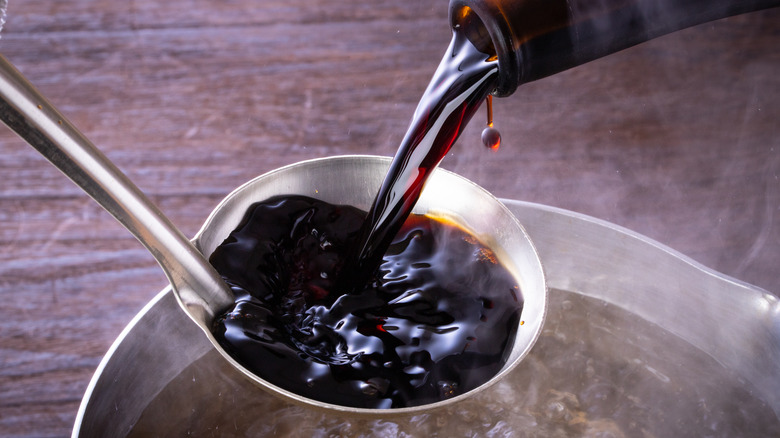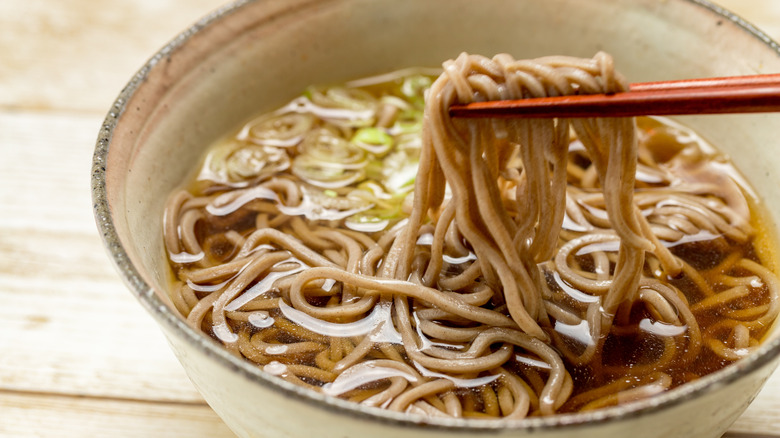Why You Should Always Have A Container Of Dashi Soy Sauce In Your Pantry
Did you know that soy sauce comes in several different varieties? According to Uwajimaya, there are light, dark, tamari, and even sweet versions with sugar, cinnamon, and cloves. But here's an underrated one that might have slipped under your radar: dashi soy sauce.
This item is a mix of rice alcohol, soy sauce and dashi, which is a blend of dried bonito flakes and kelp seaweed — though shiitake mushrooms and dried fish may also play a role depending on the brand, says Umami Information Center. Together, these ingredients form a flavorful stock that's used in many Japanese dishes, such as miso soup (via Kamada Soy Sauce).
If you'd rather make your own dashi soy sauce, Cooking Japanese Style says to boil equal amounts of sake and mirin, then to turn off the heat and add the dried bonito flakes and soy sauce. Let the mixture sit for roughly a day at room temperature, strain and bottle the mixture, then store it in the fridge. It's a pretty easy process, but the question remains, isn't regular old soy sauce enough? Well, not according to one executive chef.
Great for weeknight dinners
Now that it's been established what dashi soy sauce is, let's talk about why you should always have a container of this stuff on hand. Hiroki Odo, an executive chef featured in Food & Wine, explains that weeknight dinners like Japanese-style pasta can be quick and easy to make if you have a bottle of dashi soy sauce, which because of its robust and complex flavor, is the primary component in dishes that include it. The other ingredients for his simple, umami pasta are shimeji or shiitake mushrooms, butter, pasta, nori, and scallions. The list of weeknight dinners continues as No Recipes mentions that stews, salads, noodle soups, and tofu dishes benefit from the condiment's concentrated flavors. It can also be used as you would regular soy sauce and incorporated into marinades or used as a dipping sauce.
Japanese Taste mentions that dashi soy sauce and its many offshoots add nuanced umami flavor profiles to your dish. The outlet explains that shiro dashi, which is identical, barring the addition of sugar, includes soy sauce (which is basically code for umami, via Umami Information Center), sake (which has umami and some fruitiness, per the National Research Institute of Brewing), and mirin (packed with sweetness, as noted by Great British Chefs). Thus, dashi soy sauce is a brew that can provide oodles of flavor to a number of Asian dishes — just think of it as soy sauce that's gotten a flavor upgrade!

